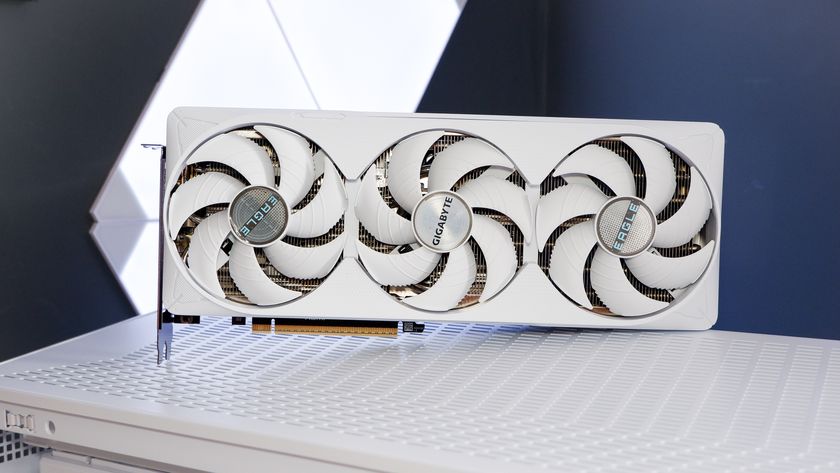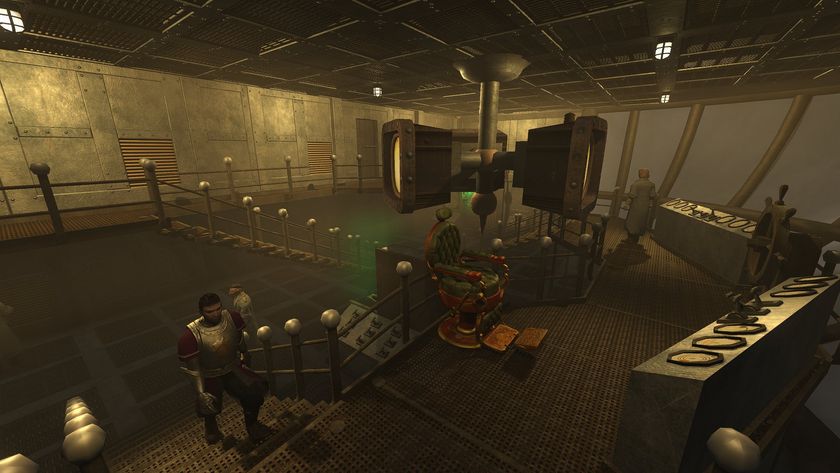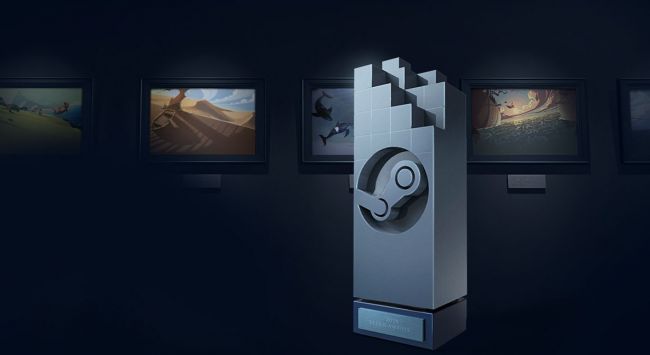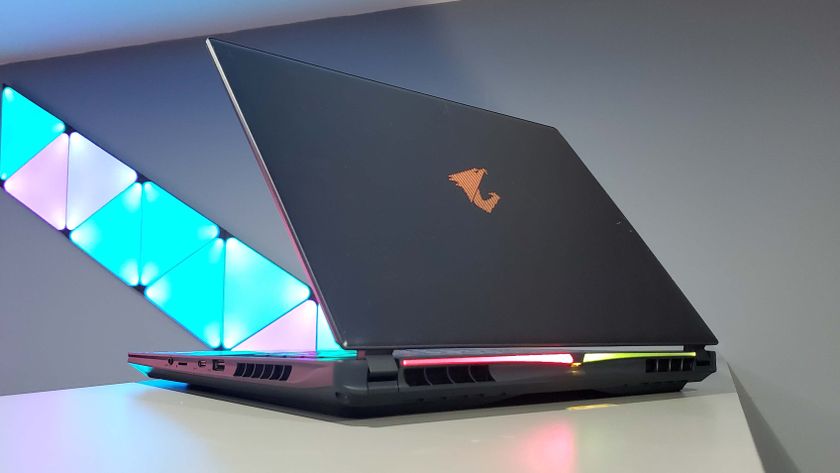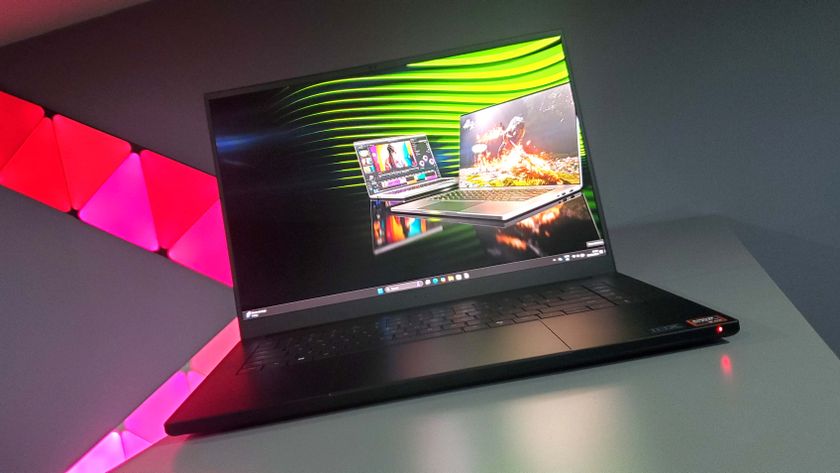The Razer Core looks like the graphics card enclosure we've been waiting for
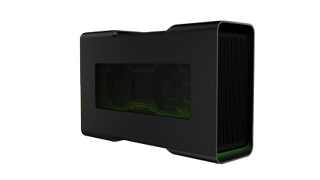
Razer hit CES hard this year with an aggressively priced, aggressively specced $999 ultrabook that’s going to put the rest of the laptop market back on its heels. But they’re a gaming company, so it makes sense they’d have something to along with the new Blade Stealth laptop, and boy do they: a graphics card dock that can handle any dual-slot GPU, feed it up to 375W of juice, and pump its data to a laptop over USB Type C at 40 gigabits per second. Even better: it’s potentially compatible with any laptop that has a Type-C Thunderbolt port.
Here’s a little CES story for you: in January 2012, I crowded into the corner of a hotel suite with now-Vice Motherboard editor Matthew Braga to look at a prototype graphics card dock, which promised something exciting and novel: it would use the new Thunderbolt connector and its amazing 10 gigabits per second of bandwidth to turn weak laptops into gaming desktops. I don’t remember which company was making it, but I do remember that we never saw it again, and it definitely never came to market in the US. Thunderbolt on PCs didn’t take off, and slapping a graphics card into a dock is only a half-solution. There’s driver, BIOS, and software work that needs to be done to make a laptop and external graphics card work together in harmony.
A year ago, at CES 2015, I saw some graphics card docks from Alienware and MSI. These actually worked! They were real products...but they only worked with one or two laptops each. The technology was proprietary, and expensive. I said they wouldn’t be successful unless they were compatible with more systems, because I’m a genius (geniuses can point out very obvious things, right? please just let me have this one), and we haven’t heard much about them since
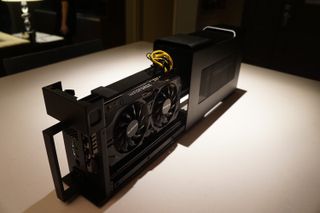
Finally, the Razer Core does it right. It’s a handsome box, with some subtle LED lighting, and a black metal chassis. Pulling a handle in the back slides out the graphics card tray for easy installation.
Inside there’s a 500 watt power supply, which provides ample power to pretty much any high-end GPU that will fit (up to 12.2 inches / 310mm long). Four USB 3 ports can provide power and pass through data to a connected laptop, and it has an Ethernet port for good measure. But what’s really exciting is the Thunderbolt 3 connector it uses, in the form of USB Type-C. Thunderbolt 3 supports up to 40 Gb/s of bandwidth, and there’s absolutely nothing proprietary about the design. The dream is tantalizingly close--a single graphics card enclosure that could work with a wide range of laptops and turn any portable into a real gaming champion.
Could it be? Could such a thing be real? It’s not quite guaranteed yet, but it’s looking promising. There are no special graphics drivers required to make the system work—you’ll just be using the normal AMD or Nvidia drivers for the GPU you place in the enclosure. The one catch is the laptop BIOS. According to Razer, the laptop BIOS will need to properly support Intel graphics switching, so the system can recognize and utilize the dedicated GPU when plugged in, and operate on the integrated GPU when unplugged. Right now, the system only works with the Blade Stealth, but once the Core is released, nothing should prevent Dell or Lenovo or Asus or anyone else from supporting the hardware, too.
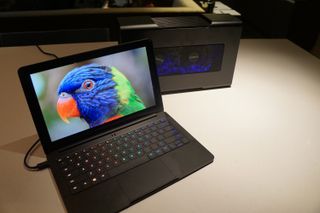
With the Blade Stealth, Razer promises it’ll be hot swappable. You can plug or unplug without restarting the system. If you have a game running, it’ll crash in the graphics hand-off, but normal Windows operation will transfer over just fine. They also claimed that during their testing, they’ve seen no signs of performance loss or latency—Thunderbolt’s bandwidth is more than enough to handle graphics processing and a couple peripherals plugged in, too.
The biggest gaming news, reviews and hardware deals
Keep up to date with the most important stories and the best deals, as picked by the PC Gamer team.
For truly demanding games, a low-power “U” series Intel CPU will be a bottleneck when paired with a dedicated GPU. And it’s too early to say if other laptop makers will support the Core, or if it could work with laptops that already have dedicated GPUs (like, say, an Nvidia 970M). But if an external graphics card dock will ever work, it’s probably going to be this one.
Razer hasn’t finalized price or release date for the Core yet, and would only say it’s coming out in the first half of this year.

Wes has been covering games and hardware for more than 10 years, first at tech sites like The Wirecutter and Tested before joining the PC Gamer team in 2014. Wes plays a little bit of everything, but he'll always jump at the chance to cover emulation and Japanese games.
When he's not obsessively optimizing and re-optimizing a tangle of conveyor belts in Satisfactory (it's really becoming a problem), he's probably playing a 20-year-old Final Fantasy or some opaque ASCII roguelike. With a focus on writing and editing features, he seeks out personal stories and in-depth histories from the corners of PC gaming and its niche communities. 50% pizza by volume (deep dish, to be specific).
